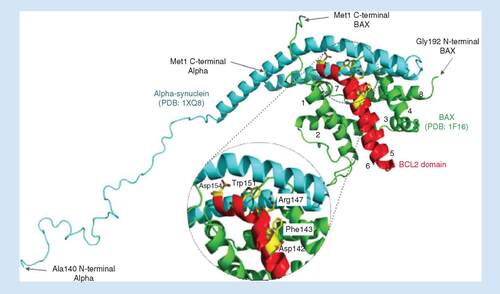Figures & data
Nodes represent proteins and edges represent PPI. The meanings of node color and node content and color and thickness of edges are detailed in the database (https://string-db.org). Parameter setting: 20 interacting proteins (ten in the first shell, ten in the second shell); interaction score 0.40 (medium confidence); all active interaction sources as mentioned in the database.
PPI: Protein–protein interaction.
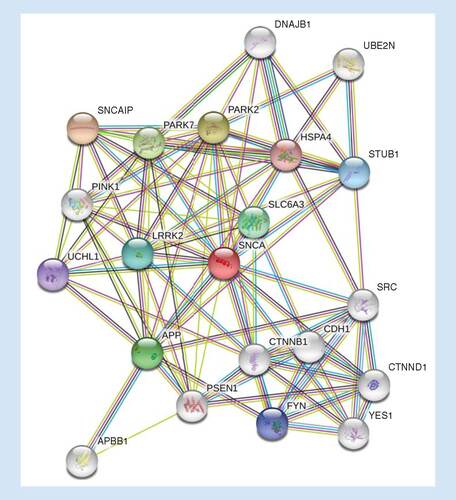
Ten interacting proteins are seen; interaction score (0.40) and active interaction source includes experimental physical interaction and gene co-expression.
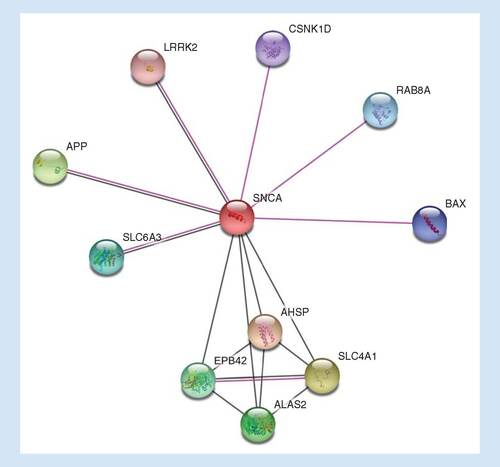
Five interacting proteins in protein–protein interaction network; interaction score set at 0.40 and active interaction source includes only experimental physical interaction.
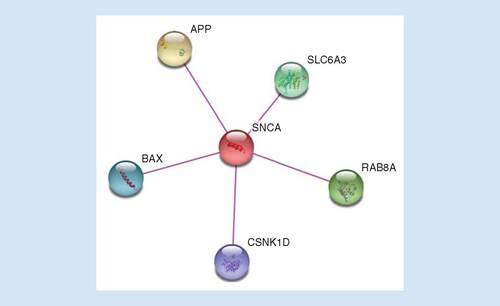
Five interacting proteins of α-synuclein and BAX can be seen; interaction score set at 0.40 (medium confidence) and active interaction source is only experimental physical interaction. Apart from BAX, two more proteins of BCL2 family BCL2L1 and BCL2L11 are also seen.
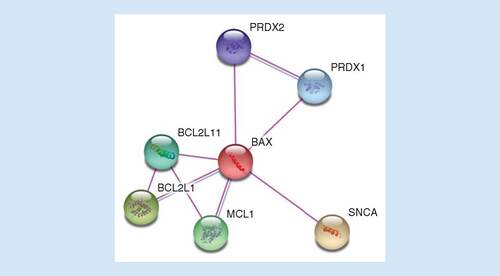
ClusPro best model obtained after docking is shown as ribbon diagram using PyMol (an open source molecular visualization system). α-synuclein is shown in cyan color and BAX in green color, whereas BCL2 homology domain is highlighted in red. The numbers represent the helices (1–8) in BAX starting from the N-terminus. The residues involved in interaction are shown with line and stick model Asp142, Phe143, Arg147, Trp151, Asp154 of BAX.
